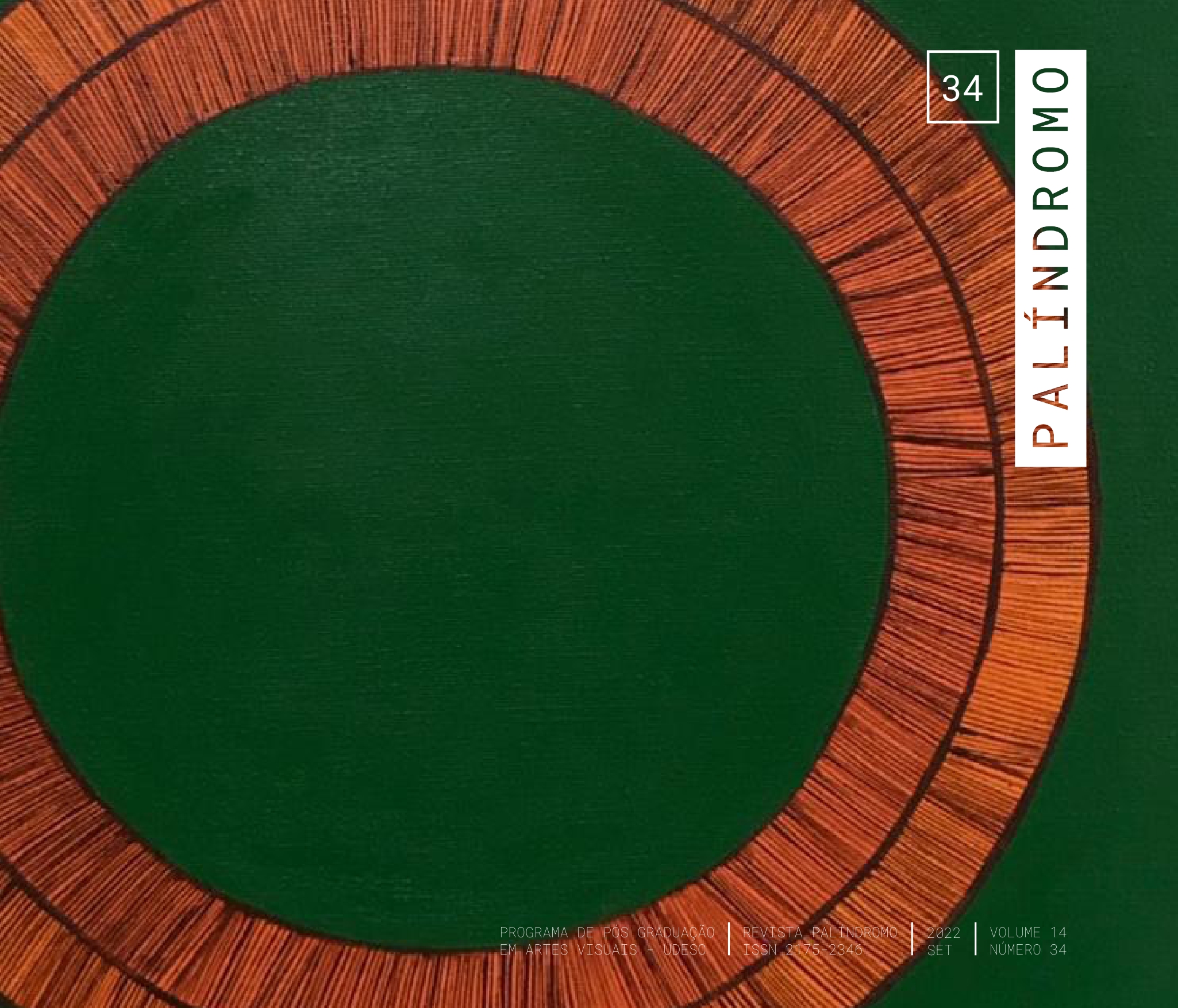The ritual artistic practices and the axé´s fruition in candomblé Ketu
DOI:
https://doi.org/10.5965/2175234614342022011Keywords:
Candomblé of Ketu, Afro-Brazilian aesthetic, Axé, Rite, OrixáAbstract
The objective of this article is to characterize, in an introductory way, certain ritual artistic practices performed in Candomblé, from the nation of Ketu, such as the songs of the African deities, named Orixás, the choreographed dances, the atabaques beats and the customs, in a way that to understand them from the ìtàn, the mythologies related to these deities. It is also intended to verify the relationship of these artistic practices with the fruition of axé, that is, the atabaques beats, the songs and the dances prepare the bodies of the Ẹlẹ́gùn for the personification of the Orixás, so that when one obtains the accuracy in the execution of the songs, the dances, the composition of the clothes, the Orixás insignia and even in the saints' daughters conduct during the rite, there is the fruition of axé, capable of transforming and achieving, and this creative process then ensures the unfolding of existence itself. To support this analysis, we consider the dialogues established, through interviews, with Ìyálòrìsà Márcia Ty Ọ̀ṣun and with Bàbálòrìsà Fábio ty Ọ̀ṣọ́ọ̀si, priests in the Ilê Erô Opará Ofá Odé Asé Jaynã. It also used bibliographic research, in particular, directed to the writings of Ìyálòrìsà Gisselle Cossard-Binon, José Beniste, Muniz Sodré, Pierre Verger, Vilém Flusser, among others. It is worth noting that such practices and knowledge represent, in Brazil, aspects of yoruba culture and history, originally from Benin, Togo and Nigeria, Sierra Leone, among other countries.
Downloads
References
ABIMBOLA, Wande. A concepção iorubá da personalidade humana. Filosofia Africana, 1981. Disponível em: https://filosofia-africana.weebly.com/uploads/1/3/2/1/13213792/wande_abimbola_-_a_concep%C3%A7%C3%A3o_iorub%C3%A1_da_personalidade_humana.pdf. Acesso em: 18/06/2022.
BENISTE, J. Òrun Àiyé: o encontro de dois mundos. O sistema de relacionamento nagô-yorubá entre o céu e a terra. 5ª edição. Rio de Janeiro: Bertrand Brasil, 2006.
BENISTE, J. Dicionário yorubá-português. 2ª edição. Rio de Janeiro: Bertrand Brasil, 2014.
COSSARD-BINON, G. “A filha de santo”. In: Moura, C. E. M. (org.). Olóòrìsà. Escritos sobre a religião dos orixás. São Paulo: Ágora, 1981, p.127-151.
FLUSSER, Vilém. Fenomenologia do brasileiro. Rio de Janeiro: UERJ, 1998. Disponível em: https://filosoficabiblioteca.files.wordpress.com/2016/03/flusser-fenomenologia-do-brasileiro.pdf > Acesso em: 16/06/2022.
KILEUY, Odé; DE OXAGUIÃ, Vera. O candomblé bem explicado: Nações Bantu, Iorubá e Fon. Pallas Editora, 2015.
MUNANGA, K. Negritude. Usos e sentidos. 3ª edição. Belo Horizonte: Autêntica Editora, 2012.
PRANDI, R. Mitologia dos orixás. 27ª edição. São Paulo: Companhia das Letras, 2001.
SODRÉ, M. O terreiro e a cidade: a forma social negro-brasileira. Mauad Editora Ltda, 2019.
VERGER, Pierre. Orixás: deuses iorubás na África e no Novo Mundo. Salvador: Fundação Pierre Verger, 2018.
Downloads
Published
How to Cite
Issue
Section
License
Copyright (c) 2022 Alice de Carvalho Lino Lecci

This work is licensed under a Creative Commons Attribution 4.0 International License.
COPYRIGHT STATEMENT
The articles published by the magazine are free to use, intended for academic and non-commercial applications. Copyright is all assigned to the magazine. The articles whose authors are identified represent the expression from the point of view of their authors and not the official position of Palíndromo Magazine. The author (s) commits to whenever they publish material referring to the article published in Palíndromo mention this publication as follows:
This article was originally published by Palíndromo magazine in its volume (place the volume), number (place the number) in the year of (place the year) and can be accessed at: http://www.revistas.udesc.br/index.php/palindromo


